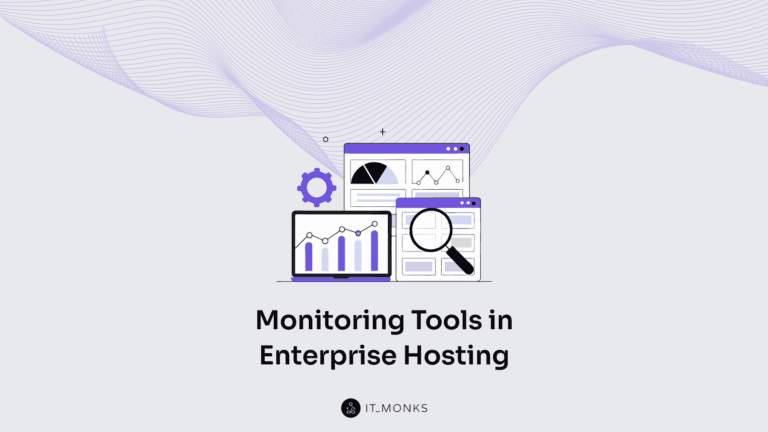Multi-Currency Ecommerce: Best Practices and Implementation in 2024
Table of Contents

Multi-currency ecommerce has become a crucial aspect of online business. As businesses expand internationally, offering products in multiple currencies is not just a convenience but a necessity. This approach enhances the shopping experience for customers, allowing them to view prices in their local currency, which can increase consumer trust, reach international markets, and boost conversion rates. Multi-currency acceptance is one of the must-have features of businesses aiming to achieve success in different industries. Are you looking forward to enhancing your ecommerce strategy? Join us as we explore multi-currency ecommerce, its benefits and drawbacks, and how to implement it effectively, primarily through WooCommerce, a leading platform for online stores.
What is Multi-Currency eCommerce?
Multi-currency ecommerce is an online store’s ability to display prices and process payments in various currencies. This system typically involves currency detection, automatic or manual conversion rates, and the integration of multi-currency payment gateways.
For instance, when a customer from Japan visits an online store based in the United States, they can see product prices in Japanese Yen instead of U.S. Dollars. This feature is vital for ecommerce resources targeting international markets, as it simplifies the purchasing process for customers by eliminating the need for manual currency conversion.
Benefits of Multi-Currency Support in eCommerce
Implementing multi-currency support in your ecommerce platform offers numerous advantages beyond simply displaying prices in different currencies. By catering to customers’ local preferences and international needs, businesses in various industries can enhance user experience, expand their market reach, and boost overall sales.
Improved Customer Experience
Offering prices in a customer’s local currency significantly enhances their shopping experience. When customers see prices in their familiar currency, it builds trust and reduces the uncertainty associated with currency conversion. This familiarity leads to increased confidence in the purchasing process, which can effectively lower cart abandonment rates.
According to CSA Research, 76% of customers prefer purchasing products with information in their own language. By displaying local currency prices upfront, businesses can address this issue, ensuring a smoother and more trustworthy shopping journey for their customers.
Expanded Market Reach
Implementing multi-currency support enables businesses to tap into international markets more effectively. When a store provides multiple currencies as an option, it becomes accessible to a broader audience, including customers from different countries who might otherwise hesitate to purchase due to currency-related concerns. By accommodating local currencies, businesses can eliminate a significant barrier to entry for global consumers, thereby expanding their reach to new markets and increasing their potential consumer base.
Increased Conversion Rates
Displaying prices in local currencies offers a psychological advantage that can lead to implementing an ecommerce strategy with higher conversion rates. Customers who see prices in their currency are more likely to perceive the transaction as straightforward and less risky. This transparency reduces the mental effort required to calculate exchange rates and consider potential fees, making it easier for customers to proceed with their purchase. As a result, businesses with multi-currency acceptance often see a noticeable increase in conversion rates.
Competitive Advantage
Offering multi-currency support can set a business apart from its competitors’ resources. By providing multi-currency options, businesses demonstrate their commitment to serving international markets, which can be a significant differentiator in the eyes of consumers. This capability attracts international customers and positions the business as a forward-thinking and inclusive brand. In markets where competitors may not offer multi-currency options, this feature can be a decisive factor that drives consumer preference and loyalty.
Downsides of Multi-Currency Ecommerce
While integrating multi-currency support offers numerous benefits, it’s essential to be aware of the potential challenges that come with it. Understanding these downsides allows businesses to develop an effective strategy to mitigate risks and ensure a smooth customer experience across international markets. Below are some common obstacles associated with implementing multi-currency ecommerce.
Currency Conversion Fees
One of the primary downsides of multi-currency payments is the additional cost associated with currency conversion. Payment gateways often charge customers conversion fees, which can be absorbed by the business or passed on to the customer. These fees can vary depending on the payment gateway and specific currencies involved. To mitigate this issue, businesses should choose a multi-currency payment gateway that offers customers competitive conversion rates and consider communicating additional fees to the customer upfront to avoid dissatisfaction.
Legal and Tax Implications
Dealing with multiple currencies also introduces complexities related to legal and tax regulations. Each country may have specific laws regarding how currency exchange is handled, and businesses may be required to report earnings in local currencies or comply with international tax codes. Failing to navigate these legal frameworks properly can result in fines, penalties, or compliance issues. Business resources must consult legal experts or use accounting tools that support multi-currency processing to stay on top of tax obligations across international markets.
Technical Challenges
Implementing multi-currency ecommerce can also pose technical hurdles. One of the main challenges is ensuring that currency conversion rates are updated in real time to provide accurate prices to customers. This can strain the website, potentially affecting load times and overall performance. Additionally, integrating ecommerce resources with multi-currency tools or plugins must be seamless, as any errors in conversion calculations or delayed updates can negatively impact the user experience. To address these issues, businesses must choose reliable multi-currency plugins and ensure their website is optimized to handle the extra technical load.
How to Implement Multi-Currency Support with WooCommerce
Implementing multi-currency support is essential for businesses looking to expand their reach and cater to a global audience. WooCommerce, a popular ecommerce platform, offers robust capabilities for managing multiple currencies, making it an ideal choice for businesses of all sizes.
Why WooCommerce?
Several ecommerce platforms offer varying degrees of functionality when supporting international multi-currency transactions. Shopify, Magento, and WooCommerce are among the leading platforms that allow businesses to handle multiple currencies. However, WooCommerce is particularly well-suited for multi-currency eCommerce due to its extensive range of plugins, customization options, and user-friendly interface. It integrates seamlessly with various multi-currency tools, allowing businesses to offer localized pricing, manage currency conversion rates, and ensure a smooth checkout experience for customers worldwide.
Payment Gateways
Selecting the right payment gateway is crucial for enabling multi-currency payments. Not all WooCommerce payment processing solutions offer the same level of multi-currency functionality, so it’s important to choose one that can handle transactions in the currencies you plan to support. Popular payment gateways like PayPal, Stripe, and Authorize.Net are known for their robust multi-currency processing support, allowing businesses to seamlessly accept customer payments in different countries. Ensuring compatibility between your chosen payment gateway and WooCommerce is vital to avoid issues during checkout and provide customers with a smooth payment experience.
Currency Conversion Tools
WooCommerce offers a variety of tools and plugins designed to facilitate currency conversion. Plugins like WooCommerce Multi-Currency and Currency Switcher for WooCommerce allow you to automatically detect a customer’s location and display prices in their local currency. These tools also update conversion rates regularly, providing accurate customer pricing. Implementing these plugins is straightforward, and they offer customization options that enable you to tailor the currency conversion process to meet your international business needs.
Localized Pricing Strategies
Setting up localized pricing requires more than just displaying prices in different currencies. Businesses must consider local markets, taxes, and shipping costs to manage multi-currency pricing effectively. Using the pricing rules available in the best WordPress inventory management plugins and WooCommerce plugins, you can adjust prices based on the economic conditions in all markets, ensuring competitive and attractive pricing for customers. Additionally, transparent communication about any additional fees or taxes related to multi-currency conversion is essential to maintain trust and avoid unexpected costs for your customers.
Best Practices for Multi-Currency eCommerce
It’s important to follow certain best practices to maximize the benefits of multi-currency ecommerce and provide your customers with a seamless experience. Below are key strategies to consider when implementing multi-currency support in your online store.
Regularly Update Exchange Rates
One of the most critical aspects of managing multi-currency pricing is keeping exchange rates accurate and up-to-date. Currency values fluctuate frequently, and outdated rates can lead to discrepancies in pricing, which confuse or frustrate customers. Using plugins that automatically update exchange rates in real-time ensures that your prices remain consistent with the current markets, helping to maintain transparency and trust with your customers.
Transparent Pricing
Transparency is key when dealing with multi-currency transactions. To avoid customer dissatisfaction, displaying any additional fees or costs associated with multi-currency conversion upfront is important. By providing a detailed breakdown of the final cost, including taxes and shipping, you can prevent surprises during checkout, reducing cart abandonment and increasing customer satisfaction.
Localized Content
In addition to displaying prices in local currencies, it’s important to adapt your content to resonate with local markets. This means translating product descriptions, adapting support materials, and considering cultural nuances in your marketing messages. Localized content makes your website more user-friendly and builds stronger connections with international customers, leading to higher engagement and conversions.
Conclusion
Offering multi-currency support is no longer a luxury but a necessity for businesses aiming to expand their reach and compete internationally. By implementing multi-currency ecommerce through platforms like WooCommerce, businesses can provide a more personalized and trustworthy shopping experience, ultimately driving higher conversion rates and customer satisfaction across international markets.
However, to fully leverage the benefits of multi-currency support, it’s essential to follow best practices such as regularly updating exchange rates, maintaining transparent pricing, and localizing your content. With careful planning and the right tools, your business can successfully navigate the complexities of multi-currency ecommerce and thrive in the global market. At IT Monks, we do all the heavy lifting, ensuring your multi-currency ecommerce store meets your customers’ demands and delivers exceptional user experience. Relay on us whenever you need expert help with your ecommerce project’s launch, rebranding, or further development!
Contact
Don't like forms?
Shoot us an email at [email protected]

Send a Project Brief
You need to load content from reCAPTCHA to submit the form. Please note that doing so will share data with third-party providers.
More InformationYou are currently viewing a placeholder content from Turnstile. To access the actual content, click the button below. Please note that doing so will share data with third-party providers.
More InformationYou are currently viewing a placeholder content from Facebook. To access the actual content, click the button below. Please note that doing so will share data with third-party providers.
More InformationYou are currently viewing a placeholder content from Instagram. To access the actual content, click the button below. Please note that doing so will share data with third-party providers.
More InformationYou are currently viewing a placeholder content from X. To access the actual content, click the button below. Please note that doing so will share data with third-party providers.
More Information


